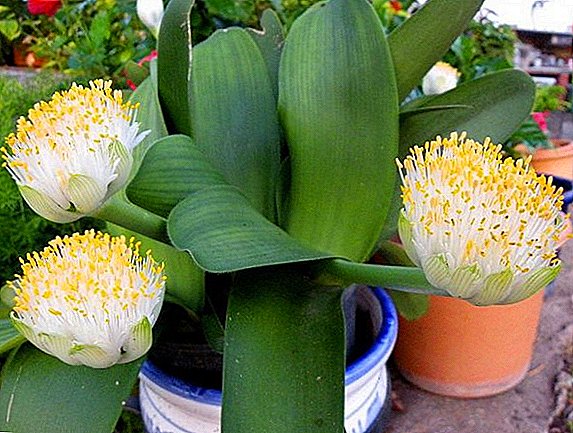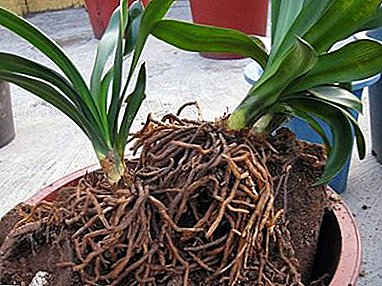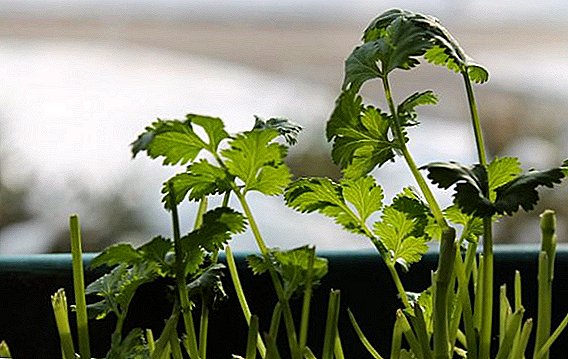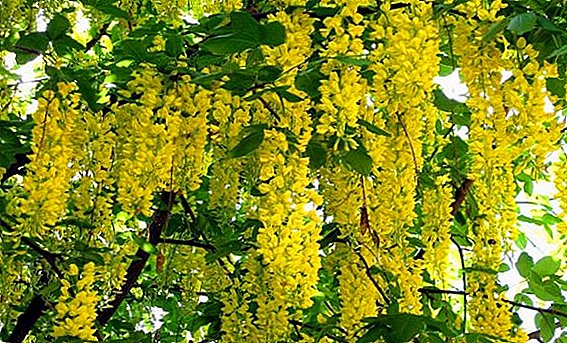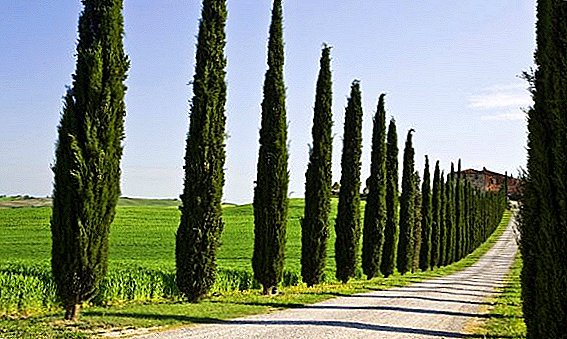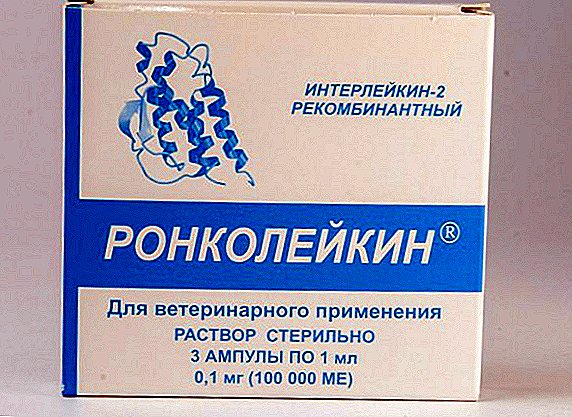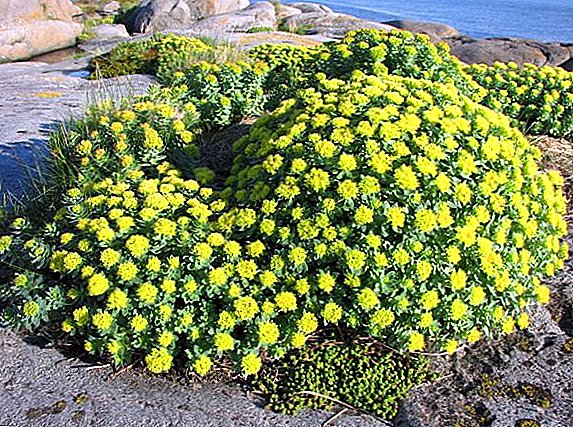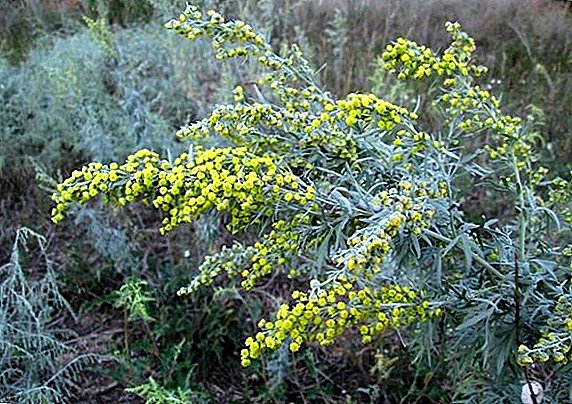 Wormwood was still used by our ancestors. Strong amulets were made from it against enemies and misfortunes, and with the help of a drug based on wormwood they caused damage. However, despite this, the plant was also used for economic purposes. From this article you will learn the full characteristics of wormwood, as well as all about low-growing and tall plant species.
Wormwood was still used by our ancestors. Strong amulets were made from it against enemies and misfortunes, and with the help of a drug based on wormwood they caused damage. However, despite this, the plant was also used for economic purposes. From this article you will learn the full characteristics of wormwood, as well as all about low-growing and tall plant species.
Wormwood: general description of the genus
Wormwood belongs to the Astrov family. The name of the plant is associated with the name of the goddess Artemis, although many call it "evshan." But if you have never encountered it and do not even know where wormwood grows, then we will tell you about it now. You can meet plants in the wild in the temperate zone of Eurasia, North America and in North and South Africa. For example, seaside wormwood is found in the dry and barren steppes, drooping wormwood - in the wormwood steppe in Central Asia.  The plant is often considered as a perennial, and biennial or annual. It is attributed to both half-shrubs and herbaceous plants.
The plant is often considered as a perennial, and biennial or annual. It is attributed to both half-shrubs and herbaceous plants.
However, for each variety there is one characteristic difference - the location of the leaves. Inflorescences of wormwood are formed in baskets. The flowers have pink, yellow and white colors.
Depending on the species, the openwork leaves of wormwood are distinguished by a silvery-white, silver-blue, steel and grayish-green color.
Another difference in the types of decorative wormwood is the height of the plant. Low-growing plants grow to 20 cm in height, and tall - up to 1 m.
Wormwood - unpretentious plant and can withstand a long period without water. 
Now that you know what the wormwood looks like, let's move on to the description of each plant species.
Tall wormwood
If you want to beautifully decorate the garden, then you will need tall wormwood, the description of which we will give in the following sections.
Every garden owner wants to please the eye with properly chosen proportions and correct lines. To properly equip the garden area, you need to properly approach the issue of planning: make the beds, fences, beautifully arrange flower beds.
Gmelina Wormwood
It is difficult to count how many species of wormwood exist in the world. However, we will tell in detail about the most popular of them, such as, for example, Gmelin wormwood (another name for this species is “Sacrificial”). This plant belongs to medicinal herbs. Reaches up to 1 m in height. Upright stems closer to the root lumbering.
It grows in the Far East on forest meadows, forest edges, clearings, river and pebble coasts.  For therapeutic purposes, gather the tops of the shoots. The collection is carried out during flowering.
For therapeutic purposes, gather the tops of the shoots. The collection is carried out during flowering.
The therapeutic wormwood contains essential oils (a-pinene, r-pinene, p-cymol, limonene, borneol, camphor, and camphene), tannins, vitamin C, organic acids, as well as alkaloids, coumarins, rubber, and bioflavonoids.  Gmelin wormwood has antipyretic, analgesic, expectorant, anti-edematous, anti-inflammatory properties. Used to prepare the drug "Chamazulene."
Gmelin wormwood has antipyretic, analgesic, expectorant, anti-edematous, anti-inflammatory properties. Used to prepare the drug "Chamazulene."
Wormwood
A plant such as wormwood is considered to be perennial and grassy.
This species has a strong aroma and wormwood bitterness. This is the most bitter plant that is used in the preparation of medicines.
Did you know? Wormwood is the main ingredient of the quite popular absinthe drink.Europe is considered the homeland of this type of wormwood, although it has been growing for a long time in North Africa and Western Asia. Used in Southern Europe, USA, where oil is produced on the basis of wormwood.
 You can meet the plant along the roads, on littered kitchen gardens, meadows, near houses and forest edges.
You can meet the plant along the roads, on littered kitchen gardens, meadows, near houses and forest edges.Wormwood grows up to 2 m in height. The shoots are erect, with silvery felted hair. Flowers - yellow, spherical baskets grow to 3.5 mm in diameter.
The leaves of wormwood (before flowering) contain sesquiterpene lactones, bitter glycosides, saloids, phytoncides, ascorbic acid, essential oil, potassium salts, carotene and organic acids.
Essential oil contains thuyl alcohol, thujone, cadinene, curcumen, chamazulenogen and linen. The aboveground part of wormwood contains absinthin, otabsin, ketolactones A and B, artemisetin and oxylactone.  In medicine, sheets of wormwood are used, collected at the beginning of flowering. They are used in the preparation of essential oils and some drugs. The plant has a very bitter taste and irritates the taste nerves in the mouth. It enhances the function of the gastrointestinal tract.
In medicine, sheets of wormwood are used, collected at the beginning of flowering. They are used in the preparation of essential oils and some drugs. The plant has a very bitter taste and irritates the taste nerves in the mouth. It enhances the function of the gastrointestinal tract.
Wormwood is also used in cooking as a spice for grilled meat dishes.
Important! Wormwood must not be consumed during pregnancy.The plant is often used to control moths and caterpillars. The above-ground part is used to paint the fabric in any shades of green.
Louisiana Wormwood
Louisiana wormwood grows up to 90 cm in height. It has a whitish color of leaves and yellow flowers.
This is a perennial plant that blooms in August. Most often, there are its varieties that are planted in the form of ornaments.
This species is from North America.  Often plants are used as a moth protector, which often lives in our things. In medicine, only the above-ground part of wormwood is used. From her make broths, tinctures and extracts. Wormwood powder and juice are used internally.
Often plants are used as a moth protector, which often lives in our things. In medicine, only the above-ground part of wormwood is used. From her make broths, tinctures and extracts. Wormwood powder and juice are used internally.
Important! POlina cannot be consumed for a long time, as it causes hallucinogenic conditions, convulsions and seizures.

Wormwood Lacticulum
In varieties of wormwood includes molotsvetsvetkovaya, which has the following description:
- It grows up to two meters in height.
- It is a perennial plant.
- Has openwork and large leaves, the color is dark green.
- The flowers are small, cream-colored, with a fragrant aroma.
 The wormwood lacticulum between currant bushes looks beautiful.
The wormwood lacticulum between currant bushes looks beautiful.Annual wormwood
The wormwood annual herb is indeed an annual herb. You can meet her in East and Central Asia, as well as in South and Southeast Europe. It grows in soot near the railways and on sandy areas. It is considered a weed.
The annual wormwood contains essential oils with a pleasant odor, ascorbic acid, tannins and alkaloids. In 1972, a wormwood annual was used to create a cure for malaria. In our time, the aboveground part of the plant is used as an aromatic seasoning. Essential oil is used to create perfumes and soaps.  In folk medicine, the above-ground part of malaria and dysentery is used. You can also get a red dye for the skin, and from the roots make a lemon-yellow dye for skin, wool and silk. This type of wormwood is used in the dacha more as a decoration.
In folk medicine, the above-ground part of malaria and dysentery is used. You can also get a red dye for the skin, and from the roots make a lemon-yellow dye for skin, wool and silk. This type of wormwood is used in the dacha more as a decoration.
If you do not have the opportunity to often take care of a flower bed at your summer cottage and are looking for an answer to the question of which plants require a minimum of care, then look at astilbe, host, peony, primula, rudbeckia.
Wormwood Rutolia
Wormwood rutolia grows up to 80 cm in height. It is a steppe wormwood, which can be found in Western Siberia, Central Asia and Eastern Siberia.  The stems, leaves and inflorescences of wormwood rutolist are used in medicine. The plant contains essential oils, aromatic compounds, scopoletin, organic acids, flavonoids and p-hydroxyacetophenone.
The stems, leaves and inflorescences of wormwood rutolist are used in medicine. The plant contains essential oils, aromatic compounds, scopoletin, organic acids, flavonoids and p-hydroxyacetophenone.
Essential oil has an antibacterial effect and is used not only in treatment, but also in perfumery. Infusions of wormwood rutolistnaya used in dysuria, and fresh pounded herb is used for toothache.  Decoction helps with angina, and infusions - with diseases of the heart and stomach.
Decoction helps with angina, and infusions - with diseases of the heart and stomach.
Low-growth wormwood
Low-growing types of wormwood are used as a decorative ornament, and in this section you will learn about their main characteristics with common names.
Schmidt wormwood
Now that you know what tall wormwood looks like, let's move on to describing the low-growing species of this grass.  Schmidt wormwood is a perennial plant with a bitter-spicy aroma. Grass grows up to 20 cm in height. Its leaves are silvery and deeply dissected. The flowers of the plant are small. Most often, it is used to decorate borders and stony hills, but also looks original in flower beds.
Schmidt wormwood is a perennial plant with a bitter-spicy aroma. Grass grows up to 20 cm in height. Its leaves are silvery and deeply dissected. The flowers of the plant are small. Most often, it is used to decorate borders and stony hills, but also looks original in flower beds.
It can be an excellent background for bright low roses.
Did you know? In ancient times, wormwood was scattered in England in courtrooms. It was believed that this prevents the spread of "prison fever."

Steller's wormwood
Steller's wormwood attracts attention with its openwork leaves. They are silvery and pleasant to the touch. This type of wormwood is used as a garden decoration. It is decorated with the slopes of the terraces, retaining walls, rocky hills. It also goes well with bright plants.  Corresponding to its name and group of species, Steller's wormwood can be found on stony slopes, where the plant grows up to 30 cm in length. It grows in the Far East, in Japan and in Norway.
Corresponding to its name and group of species, Steller's wormwood can be found on stony slopes, where the plant grows up to 30 cm in length. It grows in the Far East, in Japan and in Norway. 
Wormwood
Wormwood is a perennial plant and grows up to 80 cm in height. It has reddish stems. The green wormwood has dark green leaves and small reddish flowers. You can meet her in Central Asia and Western Siberia, on the edges, glades, in steppes, meadows and at the roadsides.  This type of wormwood is used for medical purposes. Especially with urogynecological diseases, diseases of the stomach, with epilepsy. Also from the fresh leaves of wormwood and pork fat make healing ointment. The plant contains rubber and phenol carboxylic acids, as well as essential oils. At the roots there is artemaisaketon and dehydrofolcarinone.
This type of wormwood is used for medical purposes. Especially with urogynecological diseases, diseases of the stomach, with epilepsy. Also from the fresh leaves of wormwood and pork fat make healing ointment. The plant contains rubber and phenol carboxylic acids, as well as essential oils. At the roots there is artemaisaketon and dehydrofolcarinone.
Now, when you know what wormwood is, we move on to the next one. 
Brilliant wormwood
Brilliant wormwood can be found in the Southeast Alps. It is distinguished by a silver bloom on the leaves and a strong smell. The sheet plates are flat, thin and very low. Inflorescences grow over the leaves and have a yellow-green color.  Plants are planted next to the flower walls, on the steppe areas of the garden and on the rocky walls. Brilliant wormwood retains its decorative appearance even in winter.
Plants are planted next to the flower walls, on the steppe areas of the garden and on the rocky walls. Brilliant wormwood retains its decorative appearance even in winter.
Cold wormwood
Cold wormwood is a perennial plant, reaching up to 40 cm in height. The leaves are short and have a pale color. The flowers are yellow or purple-pink.
You can meet in the north of China and Central Asia, on rocky slopes, steppes, in pine forests and on terraces.
This wormwood contains ascorbic acids, essential oils, flavonoids, cineole, borneol and fenchone.  For medicinal purposes, leaves, fruits, roots, grass and inflorescences of the plant are used. Infusions and decoctions have expectorant, diaphoretic and antipyretic properties. They are used for diphtheria, bronchitis, cough, malaria, pneumonia and pulmonary tuberculosis.
For medicinal purposes, leaves, fruits, roots, grass and inflorescences of the plant are used. Infusions and decoctions have expectorant, diaphoretic and antipyretic properties. They are used for diphtheria, bronchitis, cough, malaria, pneumonia and pulmonary tuberculosis.
Did you know? In ancient Rome, the winners of chariot races were awarded a prize - wine with a wormwood. It strengthened the health and immunity.Wormwood is a beautiful and useful plant, and we hope that with the help of our article you were able to figure out what types of grass and their differences exist.


